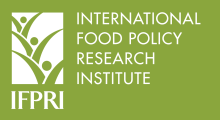Resource information
This paper investigates the impacts of population growth, market access, agricultural credit and technical assistance programs, land policies, livelihood strategies and other factors on changes in land management, natural resource conditions and human welfare indicators since 1991 in the northern Ethiopian highlands, based on a survey of 198 villages. We find that population growth has contributed significantly to land degradation, poverty and food insecurity in this region. In contrast, better market access and some credit and technical assistance programs were associated with improvement (or less decline) in land quality, wealth and food security; suggesting the possibility of “win-win-win” development outcomes with appropriate interventions. Land redistribution was associated with adoption of inorganic fertilizer, but also with declining use of fallow and declining soil fertility. We find also that different land management practices are adopted where different livelihood strategies are pursued, suggesting the importance of considering livelihood strategies in technical assistance programs. Development strategies should be tailored to the different comparative advantages of different locations; no “one-size-fits-all” strategy will work everywhere.


